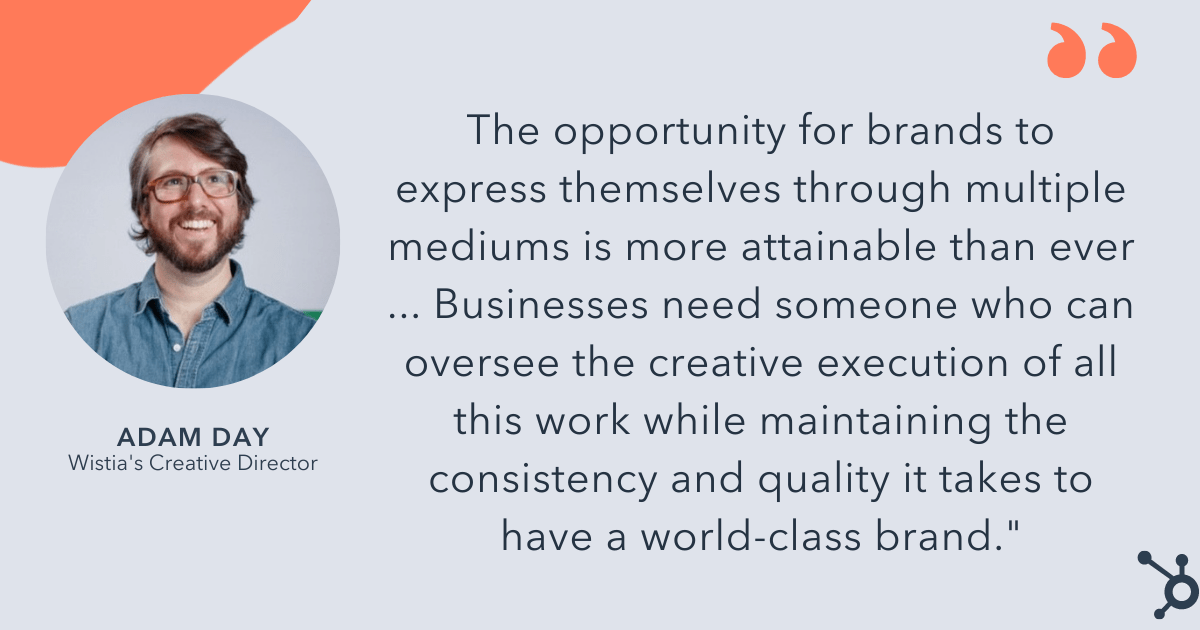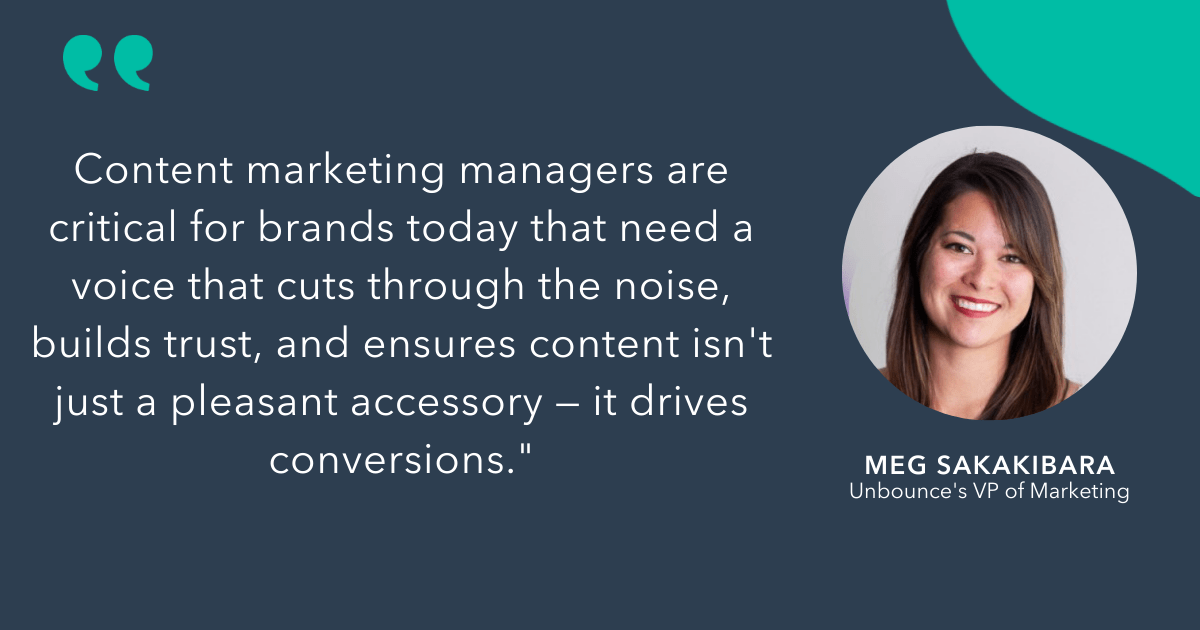![3 Roles Marketing Leaders Plan to Recruit in 2022 [New Research + Expert Insights]](https://www.liveseo.com/wp-content/uploads/2022/03/3-Roles-Marketing-Leaders-Plan-to-Recruit-in-2022-New.jpgkeepProtocol.jpeg)
The new year can be an exciting time to consider how you might expand your team to reach new goals in 2022.
But it can also be stressful for that very same reason. With a limited budget, how can you ensure you’re making the right hire?
HubSpot’s Blog Research uncovered the top three roles marketers are planning on hiring in 2022. Let’s explore why those three roles matter, according to experts.
The Top 3 Roles Marketing Leaders Plan to Hire in 2022
1. Creative Director
Nowadays, brands are expected to create top-notch content across platforms. To successfully reach new audiences and increase sales, you’ll want to have strong social media, content marketing, and video marketing strategies — to name a few.
As Wistia’s Creative Director, Adam Day, puts it, “In the context of today’s media landscape, the opportunity for brands to express themselves through multiple mediums is more attainable than ever — and consumers are demanding more than ever, too.”
Day adds, “It’s not just about blog posts anymore. Video consumption, alone, is up 121% from 2019, and in a recent survey of Wistia customers, we learned that most companies are increasing their production budgets by more than 10% this year. Businesses need someone who can oversee the creative execution of all this work while maintaining the consistency and quality it takes to have a world-class brand.”
That’s all well and good. But what, exactly, does a creative director do?
“A great creative director develops a clear and engaging visual identity for your brand,” Mark Tanner, Co-Founder and COO of Qwilr, told me. “Visual consistency communicates professionalism, attention to detail, and builds buyer confidence in a brand’s capabilities.”
Tanner told me, “The creative director should ‘own’ how a brand is represented across all visual assets, from your website to ads to product brochures to sales proposals.”
Tanner continues, “And if you think the impact of a creative director is limited to aesthetics, think again. According to a study by McKinsey, design-driven companies consistently outperform their competitors, demonstrating the ROI potential of a good design experience.”
A creative director can ultimately help your business hit its sales goals by ensuring your marketing materials are highly optimized, effective, and on-brand.
As Tanner told me, “One out of three buyers are influenced by the quality of your sales materials, and that influence can either be positive, or cause your buyer to go with your competition, instead. It’s no wonder the U.S. Bureau of Labor Statistics projects creative director demand to grow by 11%, faster than the average for all occupations.”
Among other things, you can expect a creative director to guide your overarching content strategy; build and manage a successful production process; lead, inspire, and nurture your creative team to drive brand direction forward; and own specific KPIs related to content marketing.
Jenny Coppola, Head of Brand & Communications at Teamwork, says, “Creative directors should focus on ensuring that all brand touchpoints are cohesive and consistent, both visually and in terms of messaging, while also shepherding the idea of experimentation and concerted risk-taking within the team.”
Coppola says, “Your team’s creative director should always be thinking ahead to what the future could look like for the brand and the market as a whole, which means pushing ideas further and challenging the status quo of what’s expected.”
Coppola adds, “Equally as important, creative directors should be close to the customer, understanding what makes them tick inside and out. Knowing your target customer and being able to see the world through their eyes is the best way to build a brand that resonates with them.”
If you can only hire one new marketer in 2022, you’ll want to strongly consider the importance of having a creative director if you don’t already have one. Even a small but mighty team of marketers needs a creative director to nurture their strengths and guide the overarching vision.
Additionally, if your business works with freelancers, agencies, or contractors, a creative director can help streamline those processes and ensure consistency across marketing channels.

2. Creative Assistant
The second most-voted for role in 2022 is a creative assistant.
If you already have someone in a director-level or manager-level role, it makes sense to consider how you might help alleviate some of their responsibilities by hiring an assistant.
A creative assistant is an entry-level professional who will create promotional materials for your brand — those materials could include promotional videos, advertising campaigns, press releases, or social media posts.
A creative assistant will also help your creative director or manager by handling the day-to-day creation of specific marketing materials — for instance, they might write copy, produce designs or infographics, or conduct market research to identify future trends and campaign ideas.
A creative assistant can be a strategic, long-term play for your team. A creative assistant is an entry-level position, which means it’s someone who is often new to the field of marketing.
You might hire a creative assistant with impressive design skills, or a strong knowledge of the various social media platforms, and foster his or her growth on your team.
Simply put, a creative assistant is a hire who will continue to grow on your team and could ultimately have a strong impact on the future of your brand’s marketing strategy.
3. Content Marketing Manager
“Let’s face it,” Dan Seavers, Talkwalker’s Content Marketing Manager, told me,
“Consumers are rapidly changing. They are savvier, smarter, and more active in their research. And they no longer want to be sold to. They want to be educated, entertained, excited, enthralled, anything … but not sold to.”
Seavers told me that this shift in consumer behavior has led to content marketing as an essential component for any business’ bottom line.
And a strong content marketing strategy needs a content marketing manager.
Why? Well, as Seavers puts it, “To do [content marketing] properly, you need content. A lot of content. We’re talking blogs, videos, podcasts, tweets, reports, case studies, TikTok dances, and more — all weaved into an epic journey that leads consumers from discovery to purchase.”
Unbounce’s VP of Marketing, Meg Sakakibara, agrees that a content marketing manager is vital for any marketing team.
Sakakibara says, “Content marketing managers are critical for brands today that need a voice that cuts through the noise, builds trust, and ensures content isn’t just a pleasant accessory — it drives conversions.”
Sakakibara adds, “After analyzing the most influential elements for conversion in 40,000 landing pages, Unbounce found that copy influenced conversion more than 2X as much as design did. Content isn’t just the king/queen — it’s the whole kingdom. By investing in content marketing and new technologies like Unbounce’s Conversion Intelligence Platform, people are using content and optimization to convert more leads, sales, and sign-ups to win in this competitive space.”

So what should you look for in a content marketing manager?
Among other things, an effective content marketing manager will execute digital content strategies across platforms, drive traffic and engagement, have a deep understanding of what types of content perform best on which channels, and consistently evaluate how each campaign performs — and shift when necessary.
Additionally, Seaver told me, “To be good, your content marketing manager should always have one eye on your consumers’ ecosystem. Where do they cluster online? What do they talk about? What are they looking for in a product? What problem do they have that you can solve? Their content strategy will answer all of these questions, piece by piece. Slowly building that brand and consumer relationship from awareness — to having your consumers wonder how they can go on without you.”
Finally, a good content marketing manager needs to be a strong fit for your brand and goals. Content marketing is about delivering unique value to your intended audiences — which means your marketing manager needs to know, inside and out, who your target audience is and what they care about.
As Microsoft’s Group Marketing Manager Nora Xu puts it, “It goes beyond a single touchpoint with an action to purchase your product, to a flywheel of inspirational and educational content that meets them where they are. On the Microsoft Advertising brand marketing team, I look for people who can get into the mindset of our audience and create content that makes them feel seen and connected with our brand.”
Ultimately, you know what’s best for your business needs. Take a careful look at your team’s current strengths, and aim to identify a role that can help fill in the gaps.
Once you’re ready to begin the recruitment process, take a look at these 17 marketing job descriptions to attract the right hire.





